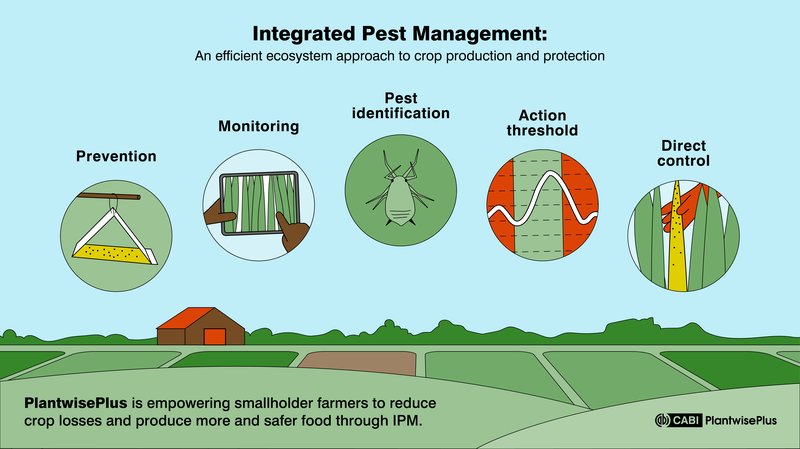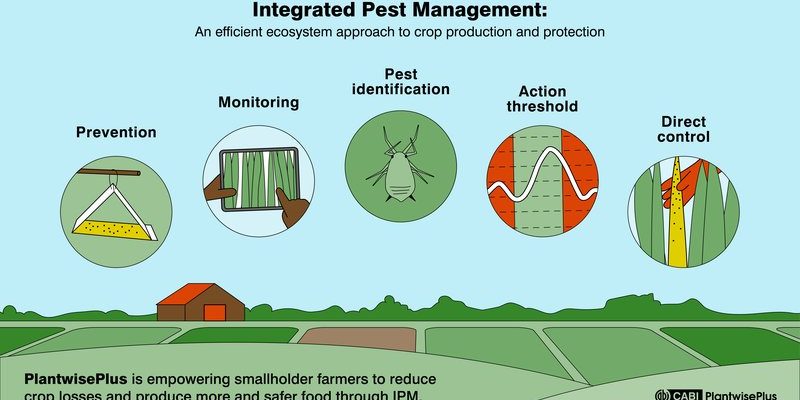
As a gardener, you might be on the lookout for ways to manage inchworm populations while keeping your garden healthy and safe for nearby wildlife. There are plenty of strategies that don’t involve toxic chemicals. Instead, let’s explore **eco-friendly alternatives** that can help you tackle inchworm issues without worrying about what you’re putting into the ground.
Understanding Inchworms and Their Behavior
Before diving into management tactics, it’s crucial to understand what inchworms are and how they act. Inchworms, typically the larvae of moths, have a unique way of moving—hence the name! They are known for their characteristic “measuring” motion, which can be both fascinating and frustrating for gardeners. Depending on the species, these little guys can cause serious damage to plants, especially young leaves, by voraciously feeding.
Inchworms generally thrive in warm weather. They love to munch on the leaves of trees and shrubs, making them a common nuisance in many gardens. You might notice the damage first as smaller holes in leaves, which can escalate into larger issues if not addressed. It’s like having a guest who overstays their welcome; at first, they seem harmless, but soon they can consume more than you expect!
Recognizing Infestations Early On
The first step to managing inchworms without pesticides is **early detection**. A little vigilance goes a long way! Keep an eye out for:
- Chewed Leaves: If you notice your plants looking nibbled, that’s a telltale sign.
- Webbing: Some inchworm species can create webs similar to spiders, which can be an indicator of their presence.
- Frass: This fancy word refers to inchworm droppings, which can often be found beneath infested plants.
Seeing these signs early allows you to take action before the problem escalates. Think of inchworm management like maintaining a clean kitchen. The sooner you notice a mess, the easier it is to clean it up.
Cultural Practices for Prevention
One of the best ways to manage inchworms is by implementing good gardening practices. This is what we call **cultural control**. Here are a few methods to consider:
1. **Healthy Plant Care:** Strong plants are less likely to succumb to pests. Ensure your plants are well-watered, fertilized, and pruned as necessary. Healthy plants can recover faster from any damage inflicted by inchworms.
2. **Diversity in Planting:** By planting a variety of species in your garden, you can confuse and deter inchworms. They often prefer specific plants, so mixing things up may keep them guessing.
3. **Regular Inspections:** Make it a habit to check your plants weekly. Early detection—remember that?—is key! If you find any inchworms, manually remove them. It’s like pulling weeds: a little effort goes a long way.
Natural Predators: Your Garden Allies
Another effective way to control inchworm populations is to invite their natural enemies into your garden. Birds, parasitic wasps, and predatory beetles all love snacking on inchworms.
To attract these helpful critters, here are some tips:
- Plant Native Flora: Native plants can attract local insect species that prey on inchworms.
- Add Bird Feeders: A simple feeder can draw in birds that will keep your inchworm population in check.
- Avoid Broad-Spectrum Pesticides: These can kill off beneficial insects along with the pests. It’s like using a sledgehammer to remove a screw—overkill!
Gardening is really about creating balance. By inviting nature into your garden, you’ll be surprised at how well it can manage unwanted pests like inchworms.
DIY Organic Solutions
For times when inchworms become a bit too stubborn and their natural predators aren’t enough, you can make your own organic pest control solutions. Here are a couple of recipes that you can easily whip up at home:
1. **Soap and Water Spray:** Mix a few drops of dish soap with water in a spray bottle. This mixture can help suffocate inchworms. Just be sure to spray in the evening to avoid harming beneficial pollinators.
2. **Neem Oil:** Derived from the seeds of the neem tree, this oil is a powerful natural pesticide. Mix according to the package instructions and spray on your plants. It disrupts the lifecycle of many pests, including inchworms.
When using any solution, always test a small area first. You don’t want to surprise your plants with something they can’t handle!
Maintaining a Healthy Ecosystem
Ultimately, managing inchworms effectively means creating a healthy ecosystem. This includes focusing on soil health, promoting biodiversity, and reducing chemical use. Here’s how:
- Composting: Compost enriches your soil, which leads to healthier plants. Healthy plants are more resilient to pests.
- Mulching: A good layer of mulch not only helps retain moisture but can also deter some pests.
- Crop Rotation: Changing where you plant your crops each year can break the life cycles of pests.
By fostering a balanced environment, you’ll not only manage inchworms better but create a thriving garden ecosystem.
Managing inchworms without pesticides is entirely possible and often more rewarding. By understanding their behavior, implementing cultural practices, attracting natural predators, and using DIY organic solutions, you can keep these little munchers at bay while preserving the health of your garden. It’s about working with nature, not against it. So, as you sip your coffee and admire your plants, remember: a little prevention and care can go a long way in keeping inchworms—and other pests—at a comfortable distance. Happy gardening!

